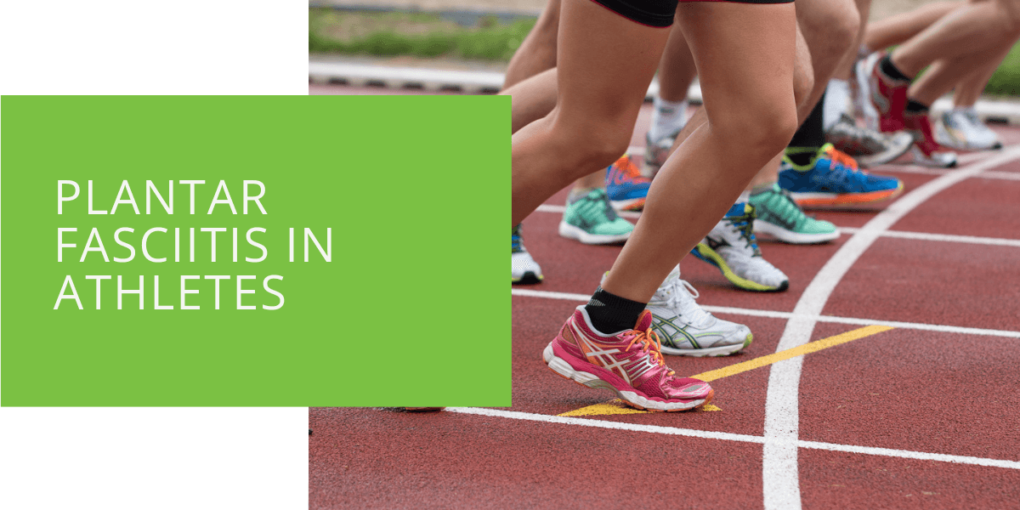Causes of Plantar Fasciitis in Athletes and How to Treat Them
Plantar fasciitis is a common condition among athletes involving inflammation of the plantar fascia, the thick band of fibrous tissue that connects the heel bone to the foot arch. This can cause dull or sharp heel pain, making running or other activities difficult. In this article, we'll explore the causes of plantar fasciitis in athletes and effective treatment options to help you recover and get back in the game.
Understanding Plantar Fasciitis in Athletes
To understand how plantar fasciitis develops in athletes, it's important first to understand the role of the plantar fascia. The plantar fascia is a flat band of tissue that runs from the heel bone to the toes, supporting the arch of the foot. When this tissue becomes inflamed, it can cause pain and discomfort in the heel and arch.
Athletes are particularly susceptible to developing plantar fasciitis due to the repetitive strain on the foot during physical activity. Overuse, overtraining, and repetitive jumping or running activities can lead to plantar fascia inflammation. Improper footwear, such as shoes that lack arch support or have inadequate cushioning, can also contribute to the development of plantar fasciitis.
Other risk factors that can increase an athlete's likelihood of developing plantar fasciitis include high arches, tight calf muscles, or a history of Achilles tendon problems. Additionally, athletes who overpronate or roll their feet inward when walking or running are at higher risk for plantar fasciitis.
Common Causes of Plantar Fasciitis in Athletes
There are several common causes of plantar fasciitis in athletes. Some of these include:
- Overuse and Repetitive Strain: This is one of the most common causes of plantar fasciitis in athletes. When the plantar fascia is repeatedly stressed, it can become inflamed and cause pain.
- Wearing Unsuitable Footwear: Shoes lacking arch support or cushioning can stress the plantar fascia, leading to inflammation.
- Poor Foot and Ankle Biomechanics: If an athlete has poor foot and ankle biomechanics, it can place additional stress on the plantar fascia, leading to inflammation.
- Inadequate Stretching and Warm-up Before Activity: Failing to stretch properly or warm up before physical activity can cause the plantar fascia to tighten, leading to strain and inflammation.
- Other Conditions: Certain conditions, such as bunions, tarsal tunnel syndrome, or fat pad atrophy, can increase an athlete's risk of developing plantar fasciitis.

Types of Athletes Affected by Plantar Fasciitis
Plantar fasciitis can affect athletes in a variety of sports and activities. Some of the most common types of athletes that may be affected by this condition include:
Runners
Runners are particularly susceptible to plantar fasciitis due to the repetitive strain placed on the feet during running. The impact of each foot strike can cause microtrauma to the plantar fascia, leading to inflammation and heel pain.
Basketball Players
Basketball players, particularly those who engage in jumping or other high-impact activities, are also at risk for developing plantar fasciitis. The stress placed on the feet during these activities can cause strain and inflammation in the plantar fascia.
Tennis Players
Tennis players may also be at risk for plantar fasciitis, particularly if they play on hard surfaces or engage in repetitive movements that stress the feet.
Dancers
Dancers, particularly those who engage in ballet or other forms of dance that require a lot of jumping or pointe work, may be at higher risk for plantar fasciitis due to the stress placed on the feet and ankles.
Gymnasts
Gymnasts, particularly those who engage in floor routines or vaulting, may be at risk for developing plantar fasciitis due to the stress placed on the feet during these activities.
Other Athletes
Plantar fasciitis can affect athletes in virtually any sport or activity that places stress on the feet. Athletes who engage in sports such as soccer, football, and baseball may also be at risk for developing plantar fasciitis.
By understanding the types of athletes most at risk for plantar fasciitis, athletes can take steps to prevent this condition and seek treatment early if they experience symptoms.

Plantar Fasciitis Treatment Options for Athletes
If you're experiencing heel pain or think you may have plantar fasciitis, it's important to seek treatment as soon as possible. Early intervention can help prevent further damage and speed up the recovery process.
Here are some effective ways to treat plantar fasciitis in athletes:
Rest and Ice
Taking a break from physical activity and using ice to reduce inflammation can help ease heel pain caused by plantar fasciitis. Icing the affected area for 15 to 20 minutes, two to three times daily can provide relief.
Stretching Exercises and Physical Therapy
Stretching exercises can help improve mobility and reduce tension in the plantar fascia. A physical therapist can create a personalized stretching program and teach exercises to improve muscle strength and flexibility.
Orthotics and Supportive Footwear
Custom orthotics or arch supports can provide additional support to the foot and help alleviate plantar fasciitis pain. These devices can be worn inside your shoes to provide extra cushioning and support to the arch of the foot.
It's also important to wear properly-fitted shoes with adequate arch support and cushioning to help reduce stress on the plantar fascia. Shoes with a low heel and a cushioned sole can help absorb shock and reduce pressure on the heel and arch.
Anti-Inflammatory Medication and Corticosteroid Injections
Anti-inflammatory medications, such as ibuprofen, can help reduce inflammation and relieve pain. A podiatrist may recommend a corticosteroid injection to reduce inflammation and provide more immediate pain relief in severe cases.
Extracorporeal Shockwave Therapy (ESWT)
Extracorporeal Shockwave Therapy (ESWT) is a non-invasive treatment option that uses high-energy sound waves to stimulate healing in the affected area. ESWT effectively reduces heel pain and improves mobility in patients with plantar fasciitis.

Night Splint
Wearing a night splint can help keep the plantar fascia stretched while you sleep. This can help reduce tension and prevent morning heel pain.
Surgery
Surgery is typically only recommended in severe cases of plantar fasciitis that do not respond to conservative treatment options. In most cases, surgery involves releasing the plantar fascia from the heel bone to reduce tension on the tissue.
Prevention Strategies for Plantar Fasciitis in Athletes
Prevention is key when it comes to plantar fasciitis in athletes. Here are some strategies that can help reduce your risk of developing this condition:
- Proper Training and Conditioning: Gradual, progressive training can help reduce the risk of overuse injuries, including plantar fasciitis.
- Wearing Supportive and Properly-Fitted Footwear: Ensure your shoes fit properly and have adequate arch support and cushioning.
- Stretching and Warm-Up Exercises: Stretching and warming up before physical activity can help reduce the risk of injury and strain.
- Regular Visits to a Podiatrist or Sports Medicine Specialist: A podiatrist or sports medicine specialist can help you identify risk factors and prevent injury.
- Early Intervention and Treatment of Symptoms: If you're experiencing heel pain or other symptoms of plantar fasciitis, seek treatment as soon as possible to prevent further damage and speed up recovery.
Conclusion
Plantar fasciitis can be frustrating and painful for athletes, but many effective treatment options are available. By understanding the causes of plantar fasciitis and taking steps to prevent and treat this condition, athletes can stay healthy, active, and pain-free.
If you're experiencing heel pain or other symptoms of plantar fasciitis, contact a podiatrist or sports medicine specialist for personalized guidance on treating and preventing this condition. With the right treatment and preventive strategies, you can get back to doing what you love without the pain and discomfort of plantar fasciitis.

